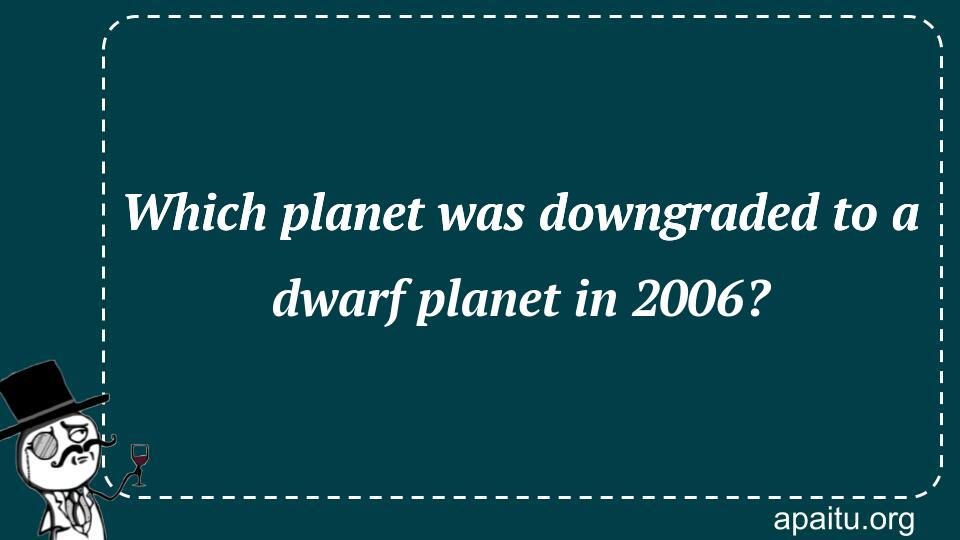Question
Here is the question : WHICH PLANET WAS DOWNGRADED TO A DWARF PLANET IN 2006?
Option
Here is the option for the question :
- Earth
- Saturn
- Mercury
- Pluto
The Answer:
And, the answer for the the question is :
Explanation:
When Pluto was found in 1930, it joined the solar system as the ninth planet. However, the IAU demoted the celestial body to the category of a dwarf planet in 2006. Pluto, like the other planets, has an orbit around the sun, but because of its proximity to Kuiper Belt objects, it cannot be considered a true planet.

Pluto, once considered the ninth planet in our solar system, was downgraded to a dwarf planet in 2006 by the International Astronomical Union (IAU). This decision was met with both controversy and fascination by the public, as many people had grown up learning about Pluto as a planet and were surprised to hear that it had been reclassified.
Pluto was discovered in 1930 by American astronomer Clyde Tombaugh. At the time, it was believed to be a ninth planet in our solar system, located at the outer edges of the Kuiper Belt, a region of icy objects beyond Neptune. Over the years, scientists discovered other objects in the Kuiper Belt, some of which were larger than Pluto, leading to questions about its classification as a planet.
In 2005, a team of astronomers discovered a large object in the Kuiper Belt called Eris, which was initially thought to be larger than Pluto. This discovery sparked a debate among astronomers about the definition of a planet, and whether Pluto should still be considered one.
The IAU, the international organization responsible for naming and classifying celestial bodies, eventually decided to re-evaluate the definition of a planet. In 2006, they announced a new definition that required a celestial body to meet three criteria in order to be classified as a planet: it must orbit the Sun, it must be spherical in shape, and it must have cleared its orbit of other debris. Pluto failed to meet the third criterion, as its orbit overlaps with those of other objects in the Kuiper Belt.
As a result, the IAU reclassified Pluto as a dwarf planet, and it is now considered one of five recognized dwarf planets in our solar system. Despite this change in classification, Pluto remains a subject of fascination for scientists and the public alike. In 2015, NASA’s New Horizons spacecraft conducted a flyby of Pluto, providing the first detailed images and data of the dwarf planet. These images revealed a complex and varied surface, with mountains, valleys, and plains.
The reclassification of Pluto sparked controversy among some members of the public, who felt that Pluto should still be considered a planet. Some scientists also disagreed with the decision, arguing that the definition of a planet was too narrow and did not accurately reflect the diversity of objects in our solar system.
Pluto’s reclassification as a dwarf planet in 2006 was a significant event in the history of astronomy and sparked debate among scientists and the public. While Pluto is no longer considered a planet, it remains a fascinating object for study, and new discoveries about its surface and composition continue to be made. The controversy surrounding Pluto’s classification serves as a reminder of the dynamic and ever-changing nature of our understanding of the universe.